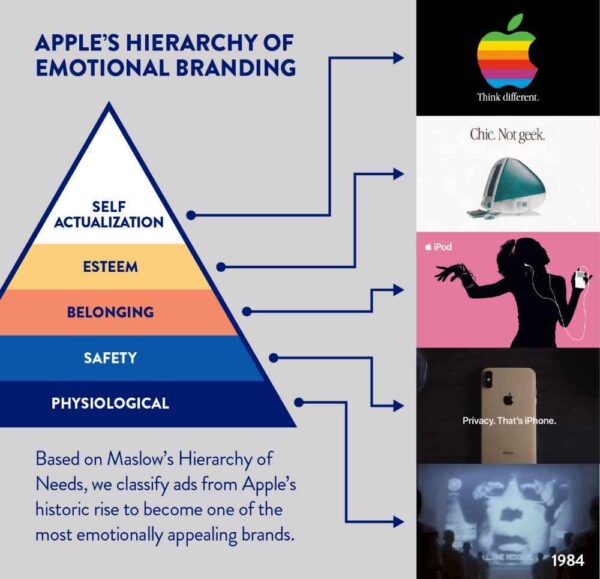
In today’s digital age, where attention spans are dwindling, brands face the constant challenge of captivating their audience. This is where visual storytelling comes into play. Through the clever use of imagery and narrative, visual storytelling allows brands to create lasting impressions that resonate with consumers. One of the most compelling forms of visual storytelling is through illustrative logo designs. In this article, we will delve into the power of visual storytelling and explore the impact of illustrative logos in the branding world.
In today’s competitive business landscape, a well-designed logo cannot be overstated. Recent statistics reveal that 67% of small businesses recognize the value of brand identity. They are willing to allocate up to $500 for a distinctive typographic logo. This trend reflects a growing awareness of the pivotal role logos play in conveying professionalism and establishing a memorable brand image. Furthermore, 18% of these businesses are willing to go further. They demonstrate their dedication to standing out by allocating up to $1000 for a logo design that resonates with their target audience. These figures underline the importance of a finely crafted logo in capturing attention and fostering trust and recognition among consumers. This will pave the way for business success.
What is Visual Storytelling?
Visual storytelling is the art of communicating a message, emotion, or idea through a variety of elements such as images, graphics, and videos. It taps into human psychology, as our brains process visuals more effectively than plain text. When a story is told visually, it stimulates different parts of the brain, making it easier for people to remember and connect with the content.
In 2000, Google made significant strides in corporate branding. This is when it engaged illustrators to redesign its logo during various holidays and events. This pioneering move not only demonstrated Google’s commitment to embracing creativity and individuality but also highlighted its recognition of the importance of adaptability in logo design. By enlisting illustrators to revamp their logos for different occasions, Google displayed a playful and dynamic image for its users. It also set a precedent for other companies to consider incorporating flexible and thematic design elements into their branding strategies. This marked a pivotal moment in typographic logo design. It showcased the power of artistry and innovation to maintain a fresh and engaging brand identity.
The Power of Illustrative Logo Designs
Among the various types of illustrative logos, illustrative logos stand out for their ability to tell compelling stories. Unlike text-based or abstract logos, illustrative logos incorporate detailed visuals that convey meaning and context. These logos use imagery to communicate the essence of a brand, product, or service, making them more memorable and engaging.

Telling a Story through Logos
An effective illustrative logo consists of various elements that work together to tell a story. It should be creative, relevant, and reflective of the brand’s personality. When designing such a logo, it is essential to consider the target audience and the message the brand wants to convey. The interplay of colors, shapes, and symbols should all align with the brand’s identity and values.

Illustrative logos are crucial to brand identity. They become the face of the brand, appearing on products, advertisements, websites, and social media. A well-designed logo can evoke instant recognition, fostering trust and loyalty among consumers. Brands like Apple and Nike are prime examples of how illustrative logos have become synonymous with their identities.
Creating an unbreakable emotional bond
Humans are emotional beings, and emotions play a significant role in shaping our decisions. Illustrative logos can tap into these emotions, creating a strong bond between the brand and the audience. When people feel connected to a brand emotionally, they are more likely to become loyal customers and brand advocates.
Maslow’s Hierarchy of Needs theory classifies emotional motivation through biological and social needs. Humans need to cover their physiological needs (food, shelter, air, water) before they can work their way up the pyramid to meet their psychological needs: esteem (respect, status, strength) and self-actualization.
What if Maslow’s theories of human needs could be applied to branding? How have the world’s most recognizable brands captured large populations and applied human nature principles?
Below, we have transposed Apple’s emotional branding strategy to Maslow’s Hierarchy of Needs:
Finding out what needs your product or service meets and where your value proposition fits within the pyramid can help you narrow down which emotional appeals to target.

Emotional Branding Appeals to Ethos, Pathos, and Logos
Remember Aristotle? He’s responsible for the three foundations of persuasive techniques, ethos, pathos, and logos.
When you balance all three of them you have an emotionally powerful brand.
These techniques are categorized into three groups based on how rhetoric is used in arguments. These three groups are:
1. Ethos: Appeal to Credibility and Ethics
Three out of four doctors recommend X over competitors.
When a doctor or another influencer endorses a product or service, an advertiser appeals to the ethos. Ethos in branding can take many forms: quoting experts in a field, citing sources, testimonials from customers, and case studies, for example.
Appealing to the ethos builds trust and credibility within your industry and establishes your brand as the authority in the space.
2. Pathos: Appeal to Empathy
“X: Live, Laugh, Long-Term Retention.”
Pathos motivates consumers to take action by creating a sense of urgency, a fear of missing out, a sense of belonging, and more. This is as long as it is done carefully and doesn’t make the consumer feel manipulated. Non-profit organizations consistently use Pathos to establish empathy and bolster their branding strategy.
3. Logos: Appeal to Logic and Reason
“X effectively combats 99.9% of churn.”
Logos, Aristotle’s most persuasive pillar of the three, is also the most dependent on the other pillars. Just pointing out facts, statistics, or features to consumers usually doesn’t convince them to act. Show your audience what your product can do for them, and try to connect their emotions and logic.
Aristotle’s three principles don’t need to be applied to every situation. However, keeping them in mind when building an emotional strategy can increase your persuasive prowess.
The Influence on Consumer Behavior
Visual storytelling has a profound impact on consumer behavior. A compelling and illustrative logo can influence purchasing decisions by triggering positive emotions and associations with the brand. When consumers resonate with a brand’s story, they are more likely to choose its products or services over competitors.
Versatility and Adaptability
Illustrative logos offer versatility and adaptability across different platforms. Whether on a website, packaging, or social media, these logos can easily be integrated into various marketing materials. This flexibility ensures branding consistency and creates a unified experience for the audience.
Case Studies
Several brands have successfully used visual storytelling and illustrative logos to boost their presence and impact. For instance, Coca-Cola’s iconic logo, featuring its signature script and vibrant colors, has become an integral part of its brand story, emphasizing happiness and togetherness.

Ethical Considerations in Visual Storytelling
While visual storytelling can be a powerful tool, brands must use it ethically. Misleading narratives or manipulative visuals can backfire, damaging brand reputation. Striking a balance between creativity and honesty is crucial to consumer trust.
The Future of Illustrative Logo Designs
As technology advances, logo designs expand. Augmented reality (AR) and virtual reality (VR) offer exciting avenues for more immersive branding experiences. Brands will continue to explore innovative ways to incorporate visual storytelling into their logos.
Conclusion
In conclusion, visual storytelling through illustrative logo designs can create lasting impressions and strong emotional connections with consumers. By effectively weaving a brand’s narrative into its logos, companies can enhance their brand identity, influence consumer behavior, and build lasting relationships with their audience.









